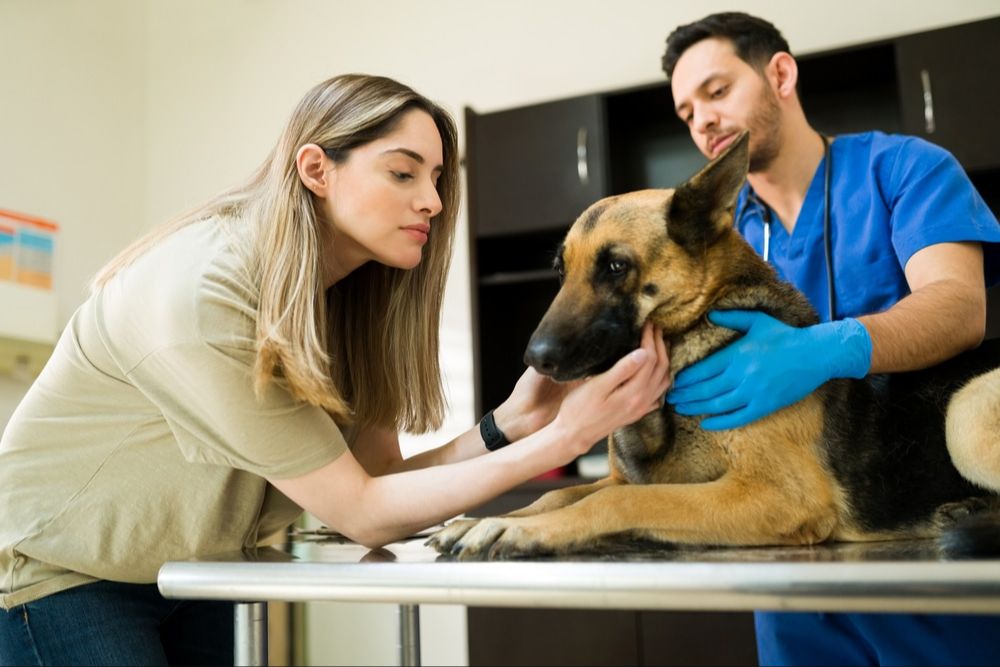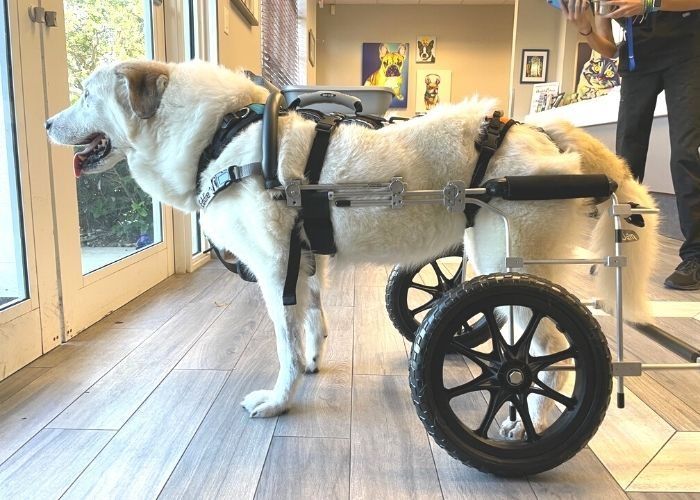Introduction
Deciding to euthanize a pet is one of the most difficult and heartbreaking choices a pet owner may face. The goal of euthanasia is to relieve unmanageable pain and suffering when a pet has a poor quality of life with no reasonable chance of improvement. Many factors are weighed by both the owner and the veterinarian when considering this option. This article will provide an overview of the circumstances under which a veterinarian may recommend or owners may consider euthanasia for their pet.
Quality of Life Assessment

Veterinarians often use quality of life scales to help assess when a dog’s declining health indicates it is suffering and no longer experiencing a good quality of life. These scales look at a variety of factors to determine the dog’s level of comfort, pain, mobility, appetite, happiness, and general joie de vivre. According to the quality of life scale from The Ohio State University Veterinary Medical Center, major considerations include: evaluating pain level and response to pain medications, the ability to breathe properly and comfortably, interest in food and water, engagement in enjoyed activities, hygiene issues, and signs of happiness or mental distress.
There are several quality of life scales available, such as the Journeys Quality of Life Scale and Lap of Love Quality of Life Scale, that allow owners to input assessments of their pet’s condition across a wide range of factors. The total score gives a general indication of the pet’s current quality of life. Lower scores suggest the dog is likely suffering or struggling, while higher scores indicate happier, healthier conditions. These scales help owners make an informed decision when the time comes to humanely end unnecessary suffering.
Chronic Untreatable Conditions
Some chronic conditions like advanced cancers, end-stage kidney disease and treatment-resistant infections can severely diminish a dog’s quality of life without the possibility of cure or adequate palliative care (https://www.sciencedirect.com/science/article/pii/S0168851022001567). These diseases often have a poor prognosis despite medical treatment. When a dog has a terminal illness that is causing unmanageable pain or distress that can’t be alleviated through other means, euthanasia may be considered as an act of mercy.
Dogs with chronic conditions may experience a gradual decline in health and worsening of symptoms over time. As their disease progresses, they may experience severe pain, inappetence, extreme weakness, seizures, breathing difficulties and other issues that significantly diminish their quality of life. At this stage, aggressive treatments may only prolong suffering without providing a cure. Euthanasia may be a compassionate option when a dog’s chronic condition has advanced to the point where nothing more can be done to provide comfort or restore an acceptable quality of life (https://www.ncbi.nlm.nih.gov/pmc/articles/PMC5300707/).
Acute Severe Injuries

Veterinarians may recommend euthanasia when a dog suffers massive trauma from events like being hit by a car, major falls, shootings, burns, or other accidents resulting in severe injuries that are beyond treatment. These acute injuries often lead to extensive internal bleeding, organ damage, broken bones, or other immediately life-threatening conditions. Some examples of severe trauma where euthanasia may be recommended include:
– Massive internal bleeding or damage to major organs that cannot be treated or repaired [1]
– Severe head trauma with extensive brain damage
– Major fractures, dislocations, or muscle/tissue damage that would result in loss of limb function even if treated
– Large open wounds, degloving injuries, or third-degree burns over a significant portion of the body
In cases of massive trauma and injury, veterinarians have to quickly assess the severity, extent of damage, and prognosis. If the injuries are clearly incompatible with life or the chance of recovery is extremely poor even with extensive treatment, euthanasia may be recommended as the most humane option. This prevents the dog from experiencing prolonged pain and distress.
Owners faced with this difficult decision can find comfort knowing they are relieving their pet’s suffering. Though emotionally heartbreaking, euthanasia after severe trauma can be an act of mercy. However, it’s critical to consult with a qualified veterinarian, as some acute injuries may still be treatable with rapid, intensive care.
[1] “Emergency Euthanasia Guidelines for Horses.” CDFa, www.cdfa.ca.gov/ahfss/animal_health/pdfs/EquineEuthanasiaBrochure.pdf.
Advanced Age
As dogs reach advanced age, often defined as over 10-12 years old depending on breed size, their quality of life naturally declines as organ function deteriorates and the aging process takes its toll (Source). While the dog may not be suffering from a specific medical condition, their mobility, senses, appetite, and energy levels diminish. At this stage, some veterinarians may recommend euthanasia to spare the dog further decline and avoid a painful death.

Veterinarians evaluate the dog’s overall quality of life, taking into account factors like their ability to eat, walk, interact, and find enjoyment in their surroundings. If the dog is still able to find some pleasure and comfort in life, most vets advise focusing on palliative and supportive care to keep them comfortable. However, if the dog’s quality of life is very minimal and declining rapidly, euthanasia may be a compassionate option to prevent further deterioration and preserve good memories.
It’s critical that euthanasia is not recommended based solely on a dog’s advanced age, but takes the full context of their condition into account, maximizing their remaining quality of life. As owners observe their elderly dogs closely, they can make an informed decision with their vet on the right time for euthanasia to alleviate suffering at the end of a long, fulfilled life.
Behavioral Issues
Severe behavior issues like violence or untreatable anxiety and fear that pose a risk to human safety are potential reasons a veterinarian may recommend euthanasia. According to the AKC, these include aggression that does not respond to treatment, extreme separation anxiety that cannot be managed, obsessive compulsive disorders, and severe fearfulness/phobias that severely impact quality of life (source). Preventive Vet notes that behavioral euthanasia may be considered if the dog is a danger to family, visitors, or the public. However, they emphasize exhausting all treatment options with a veterinary behaviorist before making this difficult decision (source).
Financial Limitations
In some cases, the treatment required to improve a pet’s quality of life may simply be cost-prohibitive for the owner. Treatments like chemotherapy, radiation therapy, orthopedic surgery, and other advanced veterinary care can easily cost thousands of dollars. Many pet owners unfortunately do not have the disposable income to pursue these expensive treatments. Additionally, animal shelters and rescue organizations often have limited funds and tight budgets that make extensive medical care for every animal impractical.
When faced with difficult and expensive medical decisions, a veterinarian may recommend euthanasia if the financial constraints make adequate treatment impossible. While pet insurance can help defray costs for some pet owners, not everyone has this option. In these heartbreaking situations, euthanasia may be the most humane choice when finances prevent the pet from receiving the care it needs for recovery or an acceptable quality of life.
(http://www.codapet.com 2023)
Owner Request
Pet owners have the right to decide if and when to euthanize their pet. However, this should be an informed decision made after considering all options and what is best for the pet [1]. Many shelters offer counseling services to help owners understand the options and make the most humane choice for their pet [2].

Euthanasia should not be treated lightly. Owners considering this option should carefully weigh quality of life factors and understand the commitment involved in pet ownership. With counseling and education, many find solutions that avoid euthanasia. But when a pet’s suffering cannot be alleviated through treatment, euthanasia may be the final act of love an owner can provide.
Conclusion
Euthanizing a pet is one of the most difficult decisions an owner may face, but it is often the most humane choice when the pet is terminally ill or suffering. The goal should be to minimize pain and preserve quality of life. Though heartbreaking, focusing on honoring the pet’s life and the joy they brought can provide comfort. Their memory lives on through the good times shared together. With the guidance of a trusted vet who understands the pet’s health status, owners can make an informed decision that prioritizes an easy passing. Though emotionally painful, pet euthanasia can be an act of kindness when the alternative is prolonged suffering. It allows for a peaceful goodbye and a dignified end to a cherished companion.
Further Resources
There are additional resources available for pet owners making difficult end-of-life decisions for their pets:
- Quality of Life Scale – This quality of life scale from Veterinary Wisdom can help owners assess their pet’s current state.
- Pawspice Quality of Life Scale – Another quality of life assessment tool specifically for dogs.
- Lap of Love – Provides in-home pet euthanasia services and support for grieving pet owners.
- ASPCA Pet Loss Support – The ASPCA offers a free pet loss support hotline and online resources.
- Pets of the Homeless – Provides information and support for homeless pet owners facing end-of-life decisions.
Consulting with a veterinarian and using quality of life scales can help guide decisions. Pet loss support organizations also provide helpful resources during this difficult time.
